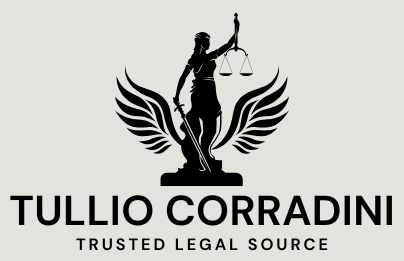So a great deal examination and commentary has been prompted by the new outbreak of turmoil in the U.S. banking procedure (like Congressional hearings with testimony from method supervisors them selves) that it’s hard to imagine that any significant details have been badly neglected. Other than they have been – at least according to my individual endeavours to abide by the circumstance. In this article are a few of the greatest:
Initially, there is been a flood of claims from progressive American legislators – led by Massachusetts Democratic Senator Elizabeth Warren – that the banking woes have stemmed mainly from a Trump-era rollback of the regulatory reforms that have been place in area following the 2007-08 global economic disaster to prevent the crackpot strategies that were the rapid cause of that in close proximity to-meltdown.
In unique, Warren argued, the 2018 legislation that eased some of these early regulations exempted all but the nation’s most important “systemically important” banking companies from required, impartial worry tests that intention to gauge their vulnerability to unexpected financial shocks.
But what these critics both don’t know, or never want you to know, is that the tension assessments that ended up developed for those most significant banking institutions hardly ever provided the form of steep – in fact historic – rise in curiosity rates pushed through by the Federal Reserve to combat multi-10 years high inflation. So even experienced the mandated anxiety exams been performed for banking institutions like the now-collapsed Silicon Valley Lender (SVB), they would have skipped the very risk that touched off the recent banking jitters.
Second, even however the previously mentioned criticisms of the rollback are offbase in the higher than vital respect, regulatory failures evidently transpired. And centered on what’s recognized, the most puzzling has to do with the Federal Reserve. Here’s a description of the Fed’s general performance in regulating SVB furnished to Congress this week by the central bank’s Vice Chair for Supervision Michael S. Barr – who is heading the Fed’s further investigation of its methods and methods. It’s value quoting in entire (footnotes have been taken out):
“In the vicinity of the finish of 2021, supervisors discovered deficiencies in the bank’s liquidity hazard management, resulting in six supervisory results relevant to the bank’s liquidity worry testing, contingency funding, and liquidity chance administration.In May perhaps, 2022, supervisors issued three findings connected ineffective board oversight, threat management weaknesses, and the bank’s inner audit purpose. In the summer time of 2022, supervisors lowered the bank’s management score to ‘fair’ and rated the bank’s business-huge governance and controls as ‘deficient.’ These scores indicate that the lender was not ‘well managed’ and was subject to advancement limits below portion 4(m) of the Financial institution Holding Business Act. In October 2022, supervisors achieved with the bank’s senior administration to specific fears with the bank’s curiosity level hazard profile and in November 2022, supervisors sent a supervisory getting on fascination level danger management to the bank.
“In mid-February 2023, personnel presented to the Federal Reserve’s Board of Governors on the influence of soaring interest charges on some banks’ monetary situation and staff’s approach to handle challenges at financial institutions. Employees talked over the issues broadly, and highlighted SVB’s desire charge and liquidity possibility in specific. Staff members relayed that they ended up actively engaged with SVB but, as it turned out, the comprehensive extent of the bank’s vulnerability was not clear until the unanticipated financial institution operate on March 9.”
What’s astonishing about this testimony – and what is been largely ignored in banking disaster commentary so far – is that it states that among “the conclude of 2021” and last November, supervisors from the Fed and from its San Francisco branch informed Silicon Valley Bank frequently of major true and probable complications in its management tactics no fewer than 5 instances, The lender did…apparently practically nothing. And Fed officers at extra than 1 stage responded by…wringing their palms?
The big problem: If financial institutions are so no cost to ignore these warnings and ratings downgrades for so extensive, why trouble with them in the initially spot? And a question almost as large: The moment it is clear that a financial institution is acting so negligently and arguably illegally, why doesn’t the Fed begin building this information and facts public in some way? Don’t depositors have the ideal to know that they are possible undertaking organization with a scofflaw?
(This report by the non-revenue financial reform advocacy team Much better Markets blames the Trump-era rollback for this seemingly gaping gap in supervisory and regulatory policy, in particular by in most instances protecting against supervisers from communicating their conclusions to lender boards of directors, this means that the senior administrators who presumably experienced a thing to do with a bank’s difficulties could keep this facts to on their own. The issue definitely requires additional investigation – and correction if this account is precise.)
Third, the torrents of easy funds with which the Fed has flooded the economy for so very long played a function in SVB’s failure which is only been fleetingly pointed out. For not only, as widely observed, did this ocean of methods motivate overly risky lending (by drastically cutting down the cost of guessing wrong). Not only did it give buyers and organizations massive, skyrocketing amounts of money to deposit in banks like SVB. Not only did the rock-base curiosity charges created by tremendous-straightforward funds direct the flush banking companies to park much more and a lot more of it in for a longer period-time period instruments – which available increased yields and hence extra income.
But these revenues, and the greater inventory charges they generally developed, have been central to the payment paid out to senior executives – the far more so because new lending possibilities weren’t remotely terrific more than enough to hold up with the massively increased provide of belongings. So lender management had at finest modest incentives to deal with improved the challenges of these in depth prolonged borrowing – for the reason that salaries and bonuses would put up with. And simply because even (or primarily?) the cleverest between us much too usually get addicted to hopium, it’s uncomplicated to have an understanding of how reckless hazard administration persisted even just after it grew to become obvious that desire rates ended up heading up and depressing the facial area price of these very long-dated assets.
This dynamic (described much more absolutely in these Fiscal Moments and Wall Street Journal pieces) looks to have been notably distinguished at SVB and the couple of other establishments that have possibly failed or are on the ropes. But it’s probable unnervingly widespread at tons of other less-than-systemically crucial financial institutions that have been working in the exact abnormally low curiosity rate ecosystem.
Of class, these three concerns really do not exhaust the checklist of banking turmoil subjects that need a great deal additional inspecting. But deeper dives into them appear like a more than very good ample area to start out.










More Stories
How Political Parties Work
Humane, Orderly Border Policies Needed
Conservatives only care when they’re the ones suffering